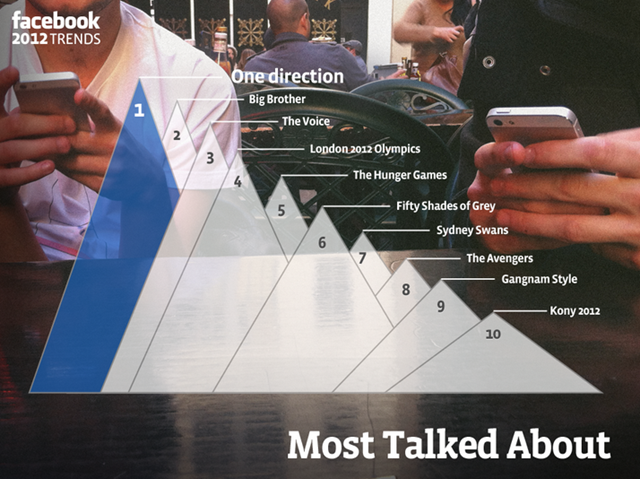Last month, as 2009 stumbled towards its own end, I asked you to share those posts that you felt were your best. I was interested in what you wrote, what you thought – and what you were prepared to share.
In response, I received emails, tweets and comments, showcasing the touching, funny and emotional aspects of our lives. This, in turn, revealed what I consider to be substantial social transformations that are currently being manifested via social media – the most important of which, I believe, continues to be “the rise of storytelling”. Each and every one of these posts resonated with its audience (and its author) for a simple reason – the power of its story to touch, engage and connect us. Let’s take a look in more detail …
We are hard wired to connect. Steve Woodruff shared the story of his son’s graduation from the US Marines. There were pictures, videos, ongoing updates – and a whole bunch of comments. The most interesting thing is that the comments were not specifically for Steve, or for the post, but for his son, David. Now, most of the commenters have never met David, but this did not stop them leaving very personal comments. Given the chance and the right context, we will share deeply personal beliefs and concerns in a very public sphere because we are hardwired to connect.
Why work harder when you can work smarter? Martin Shanahan’s schoolboy reminiscences made me smile. While this post looks literally at the way a bit of spit and polish can give your boots a long lasting sheen, sometimes you need to use a bit of nous, and the knowledge handed down from someone who has “been there and done that”. If you are an entrepreneur (or want to be), you could learn plenty from Kim Wingerei’s generous explanation of what CAN go wrong in the world of a startup. Clay Hebert shared some anecdotes from the life changing experience of being mentored by Seth Godin. Many of us think that we have to experience our own failures – but learning from the failures and experiences of others can allow you to catapult yourself forwards. As Clay suggests, sometimes you have to lean in.
Bravely embrace the future. It’s easy to say “no” to new things – to new challenges and opportunities. But Paulo Henrique Lemos suggests (along with Steve Jobs) that we can only connect the dots when we look backwards – and that the uncertain future is where we make our reputation, our mistakes and achieve our greatest triumphs. Interestingly, Trent Collins’ post about becoming a father captures this tension rather eloquently.
Where we rush towards the future, we also hunger for the past. Roger Lawrence reminds us that when “social” takes over, social media is nowhere to be found. During a 25th school reunion in South Africa, the running string of festivities meant that, for those attending, the rest of the world ceased to exist. Roger shares anecdotes, photographs and his experience of “return” – and photographs of the underside of the desk where he and his mates carved their names seems to take on a special significance – for while social media and technology propels us forward, faster, we are also anchored by our personal histories – and there is a richness to be found in the tension between the two.
The important story is the story you tell. Sometimes people wonder what story they should tell about their business. They wonder whether, if they start a blog, whether they could sustain it. The worry about running out of content. Or ideas. But Sornie shows that the truth sometimes gets in the way of a good story – it happens in fiction (which is why it is called fiction), and it happens in marketing too.
Stories need connections. Marketers often have trouble pulling together different strands of a story. They get caught starting – or in the middle – and forget to link each piece together. Rich Nadworny highlights the importance of pulling all your narrative threads together – making sure that the connections are made, that the hero wins and that there is sufficient drama to carry us all along for the ride. And Leo Hillary shows just what happens when we get a story just right – beautiful!
It’s time for business, PR and social media to grow up and get along. Craig Pearce sheds some light on the culture of public relations and Sean R. Nicholson weaves personal and professional experience together to show how some of the fears around social media make us look like ostriches (with our heads in the sand). And on the same topic, Stuart Foster demonstrates exactly how some brands and businesses are using storytelling as part of their experiential marketing strategy. But then Stefano Maggi provides the insight into HOW you do this – building and curating content within a social ecosystem.
Learn and iterate. We can learn from everything that we do – but sometimes, in our rush for the next, new thing, we forget to reflect on our successes and what made them work. Scott Mendelson has a great, in-depth article looking back at the Batman movie – what made it unique and how it set the scene for all that followed. And yes, it was over 20 years ago.
Complexity breeds resilience. Not only are we experiencing vast amounts of change in our lives – from society and culture to the workplace and politics – the rate of change is accelerating. But rather than hiding from this, Mike Chitty urges us to embrace the complexity. While we may get a buzz out of collaborating with “like minds”, in working with those who are vastly different, we will be exposed to opportunities that would never otherwise arise.
The devil is in the details. If you are like me, you pride yourself on your big picture ideas. But I also have a secret – something that my bosses seem to have all known – that I am actually all about the details. Dennis Price points out that in any business there are only a handful of people who really NEED to be big picture people – and that you (and I) are unlikely to be one of those people. It’s a great post that reminds us all to keep our eyes on the prize – but attend to the details because, as Heather Rast reminds us, that’s where the gold lies.
Everything is personal. No matter how hard we try to hide behind our professions, our roles as parents or children or our place in a community, at the end of the day everything is personal. And what makes something stick – what makes a story remarkable and an experience memorable – comes from this understanding. Heather shows that sometimes you need to bump some heads to get your point across, while Tim Berry brings a much needed personal perspective to the world of business, with some excellent practical advice. And Jasmin Tragas shows just what can be achieved when you put your creativity, passion and energy into a worthwhile cause.
Sometimes a story can stop you in your tracks. Mandi Bateson’s post Remember Ruby, is the pure telling of a story – a tragic and powerful story; while the searing honesty of this story from Zana literally knocked the breath from my body. It’s the story you read for which there are no words. It’s called Stop – and I did.
 Podcasts are one of my newly discovered joys. A well curated list of subscriptions basically means that you can remain up-to-date with your fields of interest independently of the mainstream media. This is particularly useful for topics that are too niche for the media or too controversial – which is why my personal subscription list includes podcasts on the topics of digital and social media, Australian history, and the history of writing and language (often including large amounts of swearing).
Podcasts are one of my newly discovered joys. A well curated list of subscriptions basically means that you can remain up-to-date with your fields of interest independently of the mainstream media. This is particularly useful for topics that are too niche for the media or too controversial – which is why my personal subscription list includes podcasts on the topics of digital and social media, Australian history, and the history of writing and language (often including large amounts of swearing).
